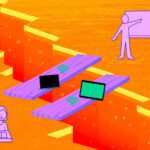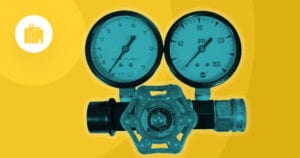
Technology’s impact on the educational world strengthens with each year. Among many other developments, artificial intelligence seems to be an up-and-coming trend. It is clear that great changes are coming, and machines will take a direct role in them. Schools and universities will never return to the original format.
Many wonder whether robots will replace professors, whether the effects of progress will be positive or negative and what should be done to improve current teaching approaches.
What is AI?
AI refers to machines performing functions of natural intelligence. Computer capabilities are utilized to exempt people from routine, make their lives easier and more pleasant. On a current development stage, AI can recognize speech, perform commands, track a person’s behavior, offer information that may interest one, reason, plan, and learn. It is popular in gaming (for example, a computer performs an opponent’s role while playing chess), car assembly (self-driving automobiles), and some other industries.
AI in the Classroom
People doubted the possibility of using artificial intelligence for educational purposes until a series of helpful digital tools were tested in schools and universities. Optimists believe that it is the beginning of the great tech era, the first step to fantastic growth and progress. Simultaneously, pessimists are claiming that machines can go out of control and lead humanity to a state similar to what was depicted in futuristic films like “The Terminator.”
As controversy heats up, optimists invest their funds in creating new AI tools, adaptive programs, and smart robots. We invite you to consider several options for using innovative technologies in the classroom.
Tutoring
Even though machines cannot yet replace a live teacher, they greatly simplify one’s work. It is impossible to work individually with each learner in a 30+ class, answer everyone’s questions, and give personal development recommendations. With AI, students may receive extra teaching time. Computers are ready to support them and provide necessary information 24/7. This helps young people struggling with challenging topics to study at a comfortable pace and eliminate knowledge gaps.
Grading
Checking homework and control papers are one of the most unloved aspects of teachers’ work. Happily, they can delegate these responsibilities to AI and spend more time communicating with students, studying educational trends, and developing advanced teaching approaches. Computer tests are already used in many educational institutions. They count correct answers and show marks instantly. Also, there is an essay checking software, detecting grammar and punctuation mistakes. Even though there are still no programs able to assess creativity and an emotional component of a text, they may be created soon.
Simplifying Trial-and-Error
Mistakes are important because they teach us to do things correctly. Simultaneously, failure is evidenced in classmates and teachers. Even the inability to answer a question may be rather frustrating, lower self-esteem and learning enthusiasm. AI is a great secret-keeper. A student may not be afraid to receive harsh criticism. One is free to experiment in the digital space, receive useful recommendations from a smart assistant, and solve problems much faster than real life.
Virtual Reality
AI expands the boundaries of a physical classroom, allows learners to explore amazing universes, conduct complex experiments, observe processes that are naturally way too fast or slow. The learning process becomes more fun, engaging, and demonstrative. Young people may not only read about ancient civilizations and celestial bodies but also see them, acquire an unforgettable experience without leaving a comfortable class, hands-on skills in disciplines that were previously taught only theoretically. Also, virtual trips may replace educational tourism, help travelers to save much time and money.
Global Learning
Information from the whole world is at students’ fingertips. They can consult famous researchers, attend online lectures of the most prominent scientists and entrepreneurs, and communicate with peers from other countries, thus strengthening international cooperation and cultural exchange and learning foreign languages from native speakers.
Disadvantages of Education AI
Of course, there are no ideal approaches and technologies. It is worth paying attention to the following factors able to limit AI use in the academic world.
Social Skills
The pleasure of live communication is essential for creating a favorable emotional atmosphere in a class. If interacting only with robots, students will not acquire social skills. Without knowing how to build human connections, a person is likely to face challenges in personal and labor life, feel lonely and unhappy.
Infrastructure
AI requires good infrastructure: the latest computers and a stable Internet connection. Schools with poor funding are unlikely to afford the necessary equipment. Most of them even do not have local Wi-Fi. However, all this is just a matter of time. When a printed book was a great rarity, only churches and reach families had a library. Artificial intelligence is also going to turn into a common thing over some time. Prices will lower with technology spread.
Technical Issues
No one is immune from technical problems. Computers are subject to virus attacks, can break or freeze at the most inconvenient moment. Large data volumes may be lost because of errors, and it will be rather challenging to restore them.
The above factors are fields for improvement rather than reasons to discard artificial intelligence.




 Related Podcast Episode
Related Podcast Episode




 Related Applications
Related Applications


 Latest IoT News
Latest IoT News









